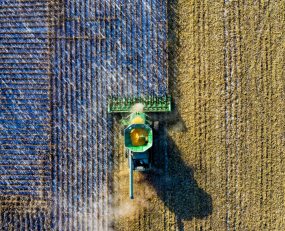
Food insecurity has become a prevalent issue during the pandemic. Though the matter is often associated with developing countries, it has become increasingly common in developed ones as the crisis continues and impacts economies.
The World Bank noted that since the start of the crisis global agricultural markets had stayed stable as food trade remained robust when overall trade fell. Despite staples such as rice, wheat and maize production being at an all-time high, the prices dropped as global demand slowed. Worldwide stringent import and export policies and restrictions, as well as strict social measures and unemployment, all played a part in declining demand, and are the same factors that are set to affect supply in the future.
Early into the crisis, to limit the impacts of food shortages, many exporting countries imposed restrictions to ensure sufficient domestic food supply. The International Food Policy Research Institute found by June this had affected at least 10% of food imports in 54 countries, and up to 80% of imported calories in some cases.
If food insecurity grows in food-producing nations, the importing countries will face a similar fate. Many staple grains and perishable goods are grown in low income countries and as the pandemic impacts these economies, farmers and food producers have found themselves having to choose between food or buying seeds and equipment for next year’s crop. This could have implications down the line in terms of food shortages.
While food insecurity is often overlooked in and by high-income economies, the pandemic has brought to light the extent to which it exists, even in the most developed of countries. The crisis highlights the fragility of society and the food supply chain. For example, in the UK the ‘just in time’ supply chain is usually reliable and efficient but showed huge flaws after panic buying led to empty shelves in March. It showed the negative side of relying heavily on imported food and other household goods. 1 in 4 adults in the UK have experienced food insecurity since the pandemic started, often not being able to access affordable food. The US has seen a huge rise in the use of food banks since March. In response Amazon donated delivery services to food banks and community organisations through its Flex network and other delivery partners, enabling the delivery of over 6m meals in 25 cities. Whilst many food supply chain operations, including British supermarkets, have been commended during this time, these figures show the weaknesses, even in some of the most established supply chains.
The immediate problem is hunger across the world but over the long-term, problems such as supply chain disruptions including shortages, trade restrictions and price increases, could become a huge challenge for both the producing as well as importing countries, further intensifying insecurity. The crisis has exposed shortcomings and the over reliance on imports and exports. Food supply chains are imperative but fragile. Developed countries’ supply chains require strengthening through means such as government policy and a change in consumer behaviour. Near-shoring and eating seasonally would help mitigate many issues; as would the global support for developing countries facing food insecurity threats, with no means to alleviate the pressures themselves.
Source: Transport Intelligence, July 28, 2020
Author: Holly Stewart